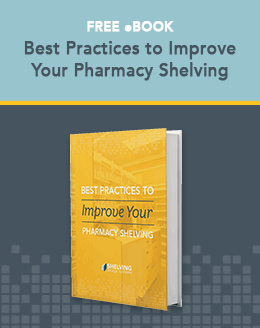 As an independent pharmacist, you know that you need to stay competitive. One of the biggest hurdles to your success could be the inefficiency of your pharmacy workflow.
As an independent pharmacist, you know that you need to stay competitive. One of the biggest hurdles to your success could be the inefficiency of your pharmacy workflow.
An inefficient pharmacy workflow is a time waster
Your gift to your customers is yourself. Only you can provide the kind of personalized attention your customers and patients have come to expect from you – and that is something no "big budget" retail or chain pharmacy can ever hope to match.
The trick is to be able to free up the time to do that – and you can. How? Make your pharmacy workflow as efficient as you can by streamlining workflow processes.
Know when you can streamline and when you can't
Not everything can be streamlined; some things must simply be done. For example, research has shown that manually filling a prescription takes between 2.32 and 2.723 minutes; that doesn't include inspecting and verifying the accuracy of the prescription, which takes an extra 0.83 to 1.628 min. to complete. If you're not in a position to utilize robots or other technology to fill prescriptions for you, you can still save time by improving efficiency in other ways.
Organize, organize, organize
Make sure workstations are as organized as possible. Your dispensing area should be well lit, at a comfortable temperature, and properly situated so the dispensing is as easy as possible. Supplies should be easy to reach with carefully organized inventory that is conveniently and efficiently stored. This makes it easy for you and your employees to find what you need quickly – no fumbling around while minutes tick away. Adequate storage is a must; shelving and fixtures should be at the proper heights, sizes, and configurations for the workstation area.
Establish foot traffic patterns in tight quarters
If you must repackage drugs into smaller units for individual patients (vs. single unit of use), each prescription will require you and your employees to make two round trips between the storage shelving and fill counter. On average, these round trips take 44 seconds for (two-trip) repackaged prescription fills and 22 seconds for (one-trip) single unit fills. You can reduce the time needed for these trips by reducing the amount of distance between storage and fill counters as much as possible. Optimize foot traffic to avoid bottlenecks in tight areas.
Establish repackaging sequences
You can streamline repackaging by setting up an exact sequence of steps for the fill:
- Review label
- Select package
- Count pills
- Fill prescription vial/package
- Select closure
- Return unused product to bilk containers
- Affix label to prescription package
- Organize paperwork and scripts
- Verify drug
Customize tech stations
Customize tech stations for every technician. Instead of using metal fixtures or other out of date devices, use carousels with a small footprint for most inventory. Tech stations must be organized to ensure that HIPAA privacy rules are strictly observed; auxiliary labels and tickets should be kept in drawers out of sight.
Greater efficiency means greater profits
When you optimize your pharmacy workflow, you'll have fewer costs and lower overhead. Once your pharmacy workflow optimization process is complete, you may even find that you can cut down on the number of personnel you need to hire; two employees may now be able to do the work of four with your newly streamlined workflow processes.
When you streamline your pharmacy workflow by optimizing processes as much as possible, you reduce costs and can give customers the attention they deserve – and well-served, happy customers mean greater profits, too.




